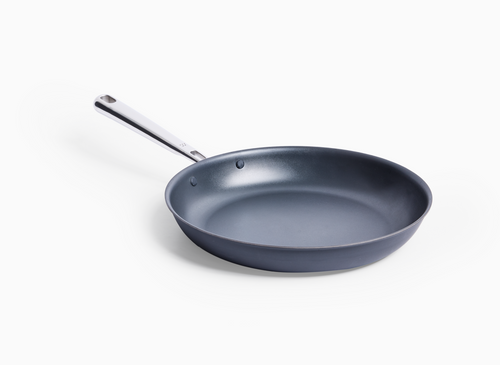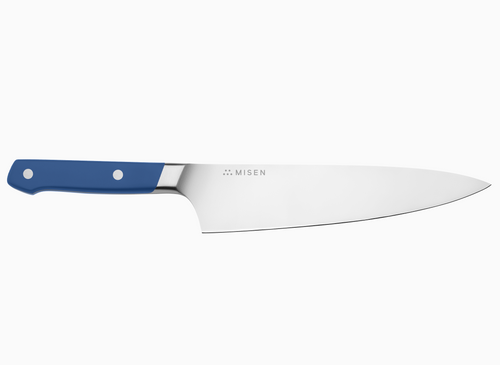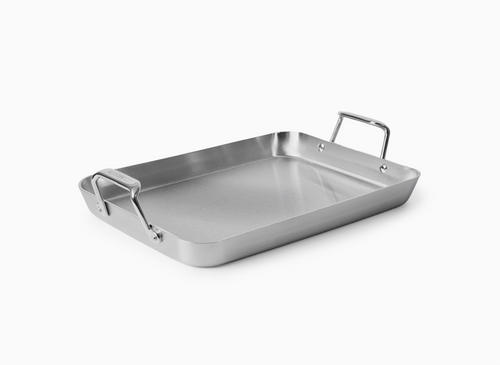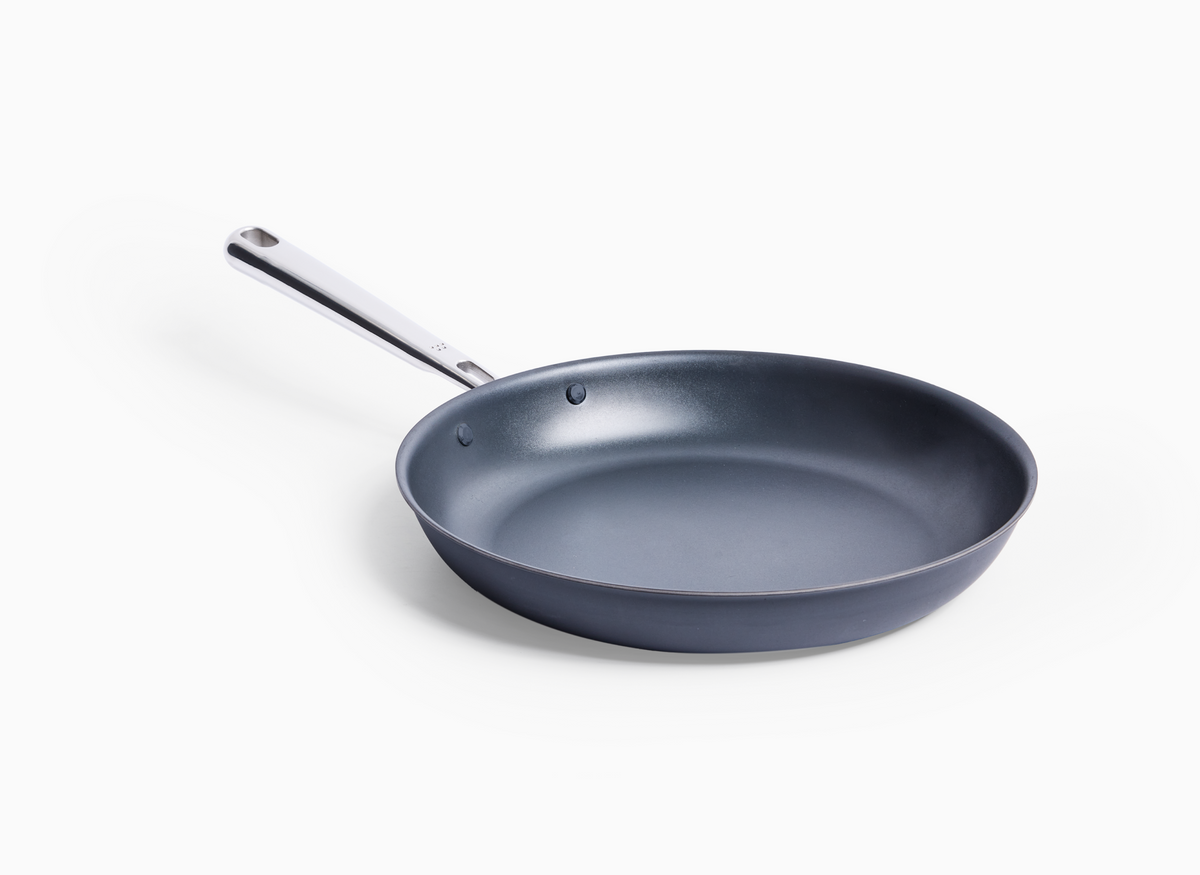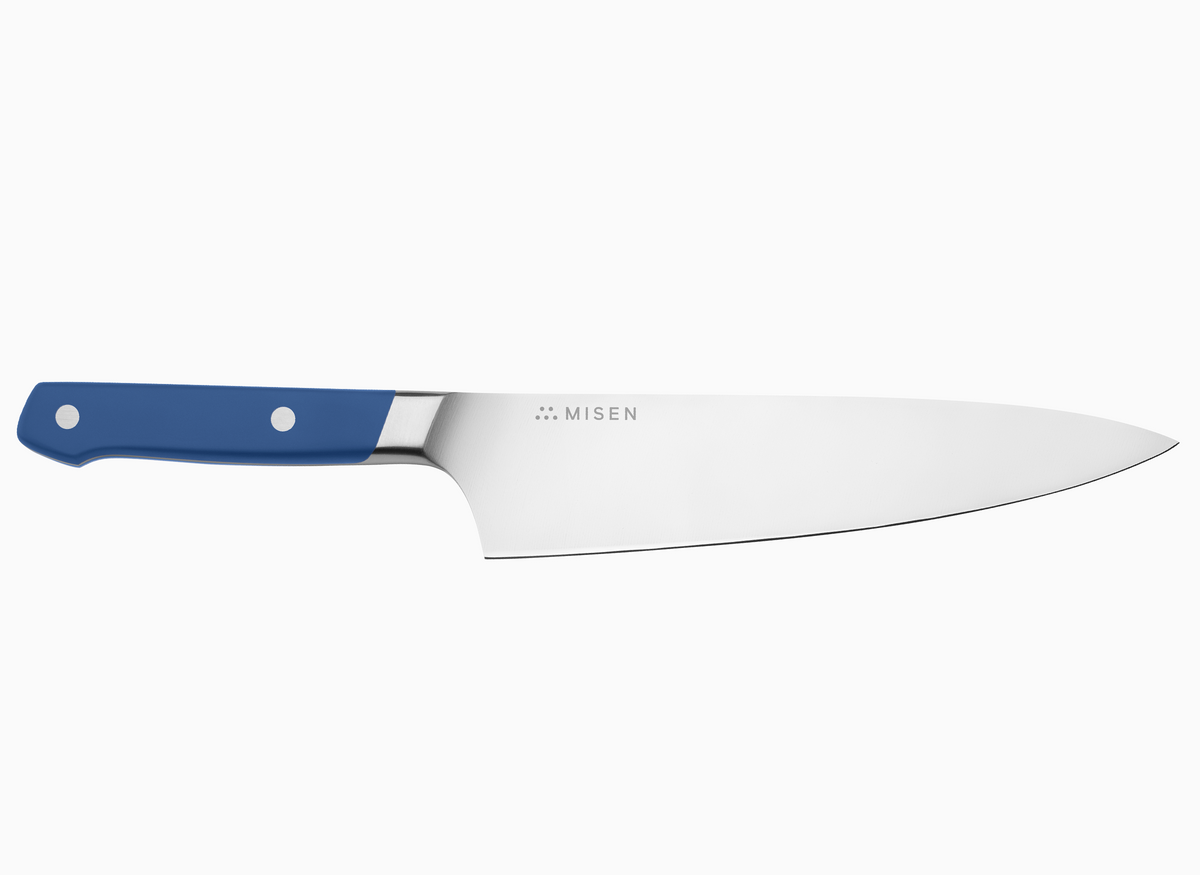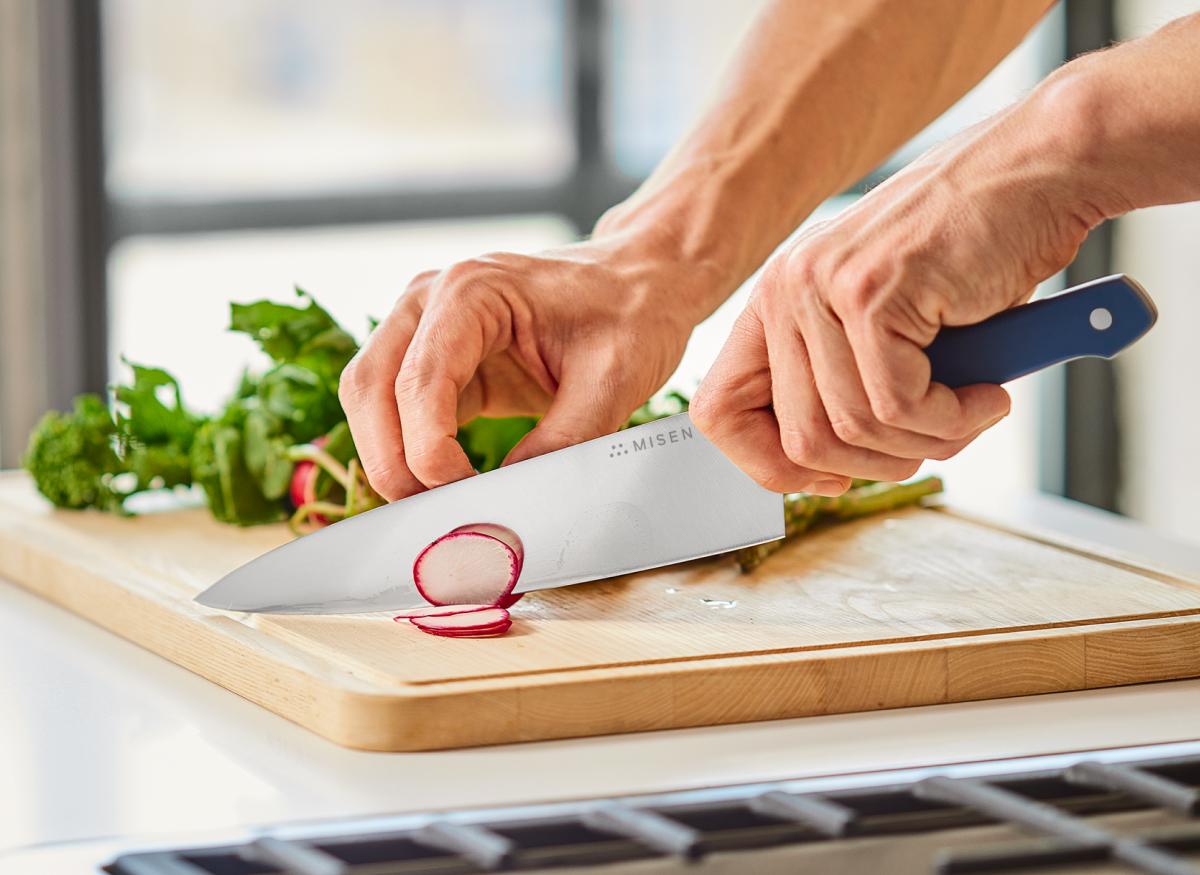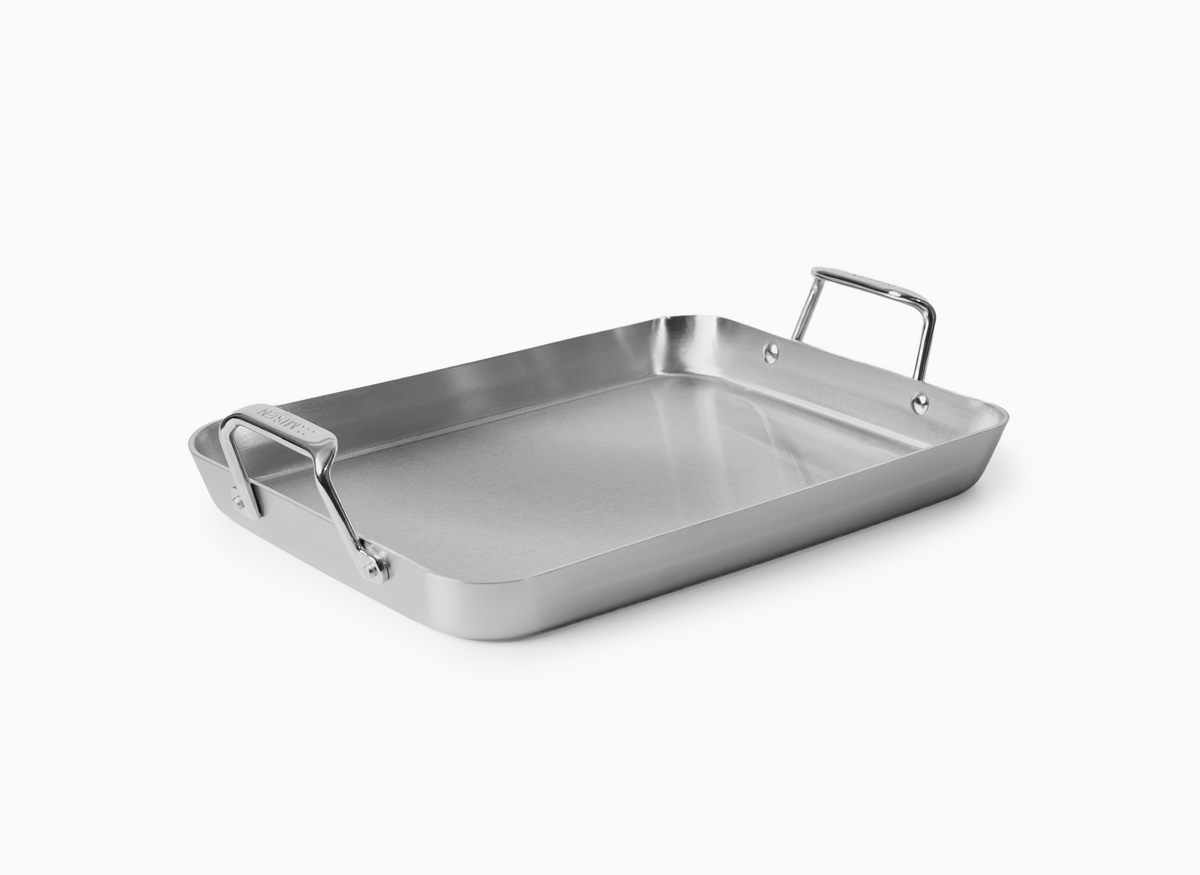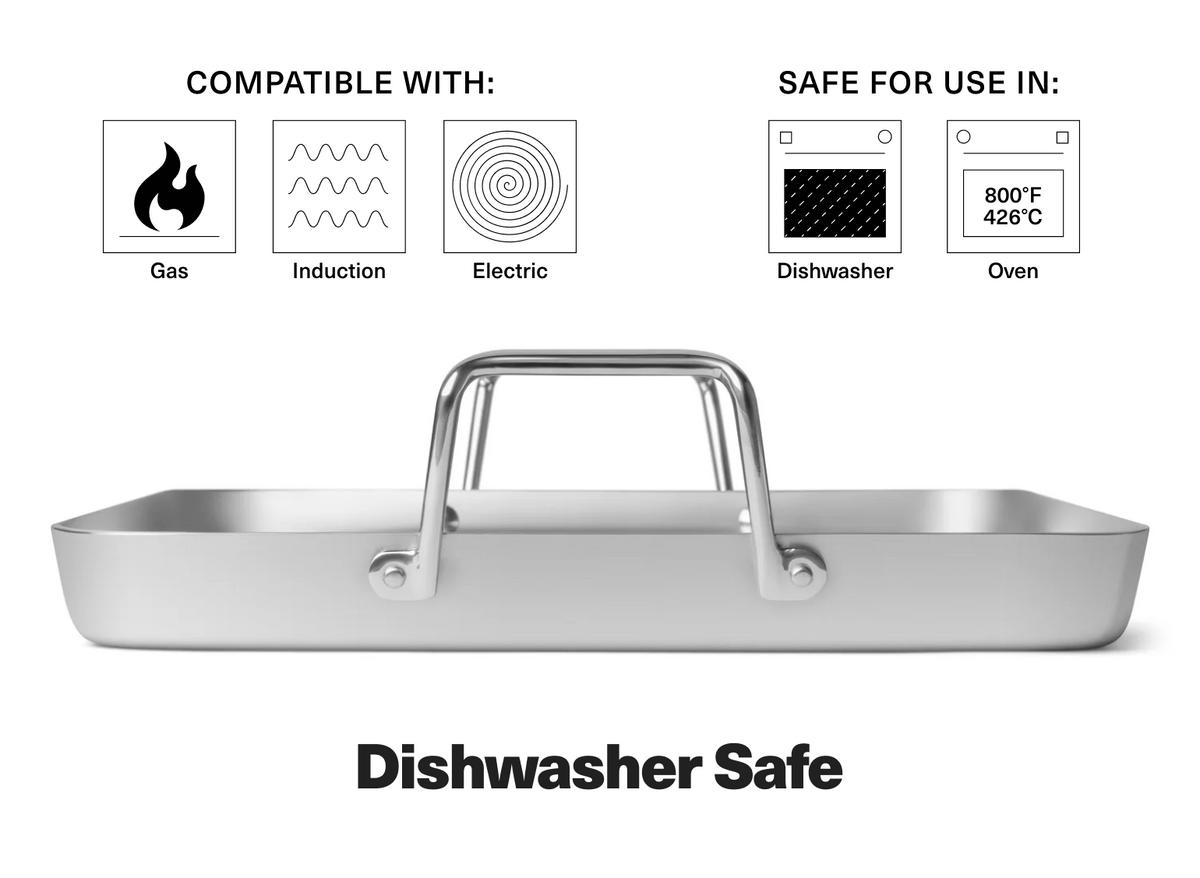10 Surprising Paring Knife Uses for Everyday Cooking
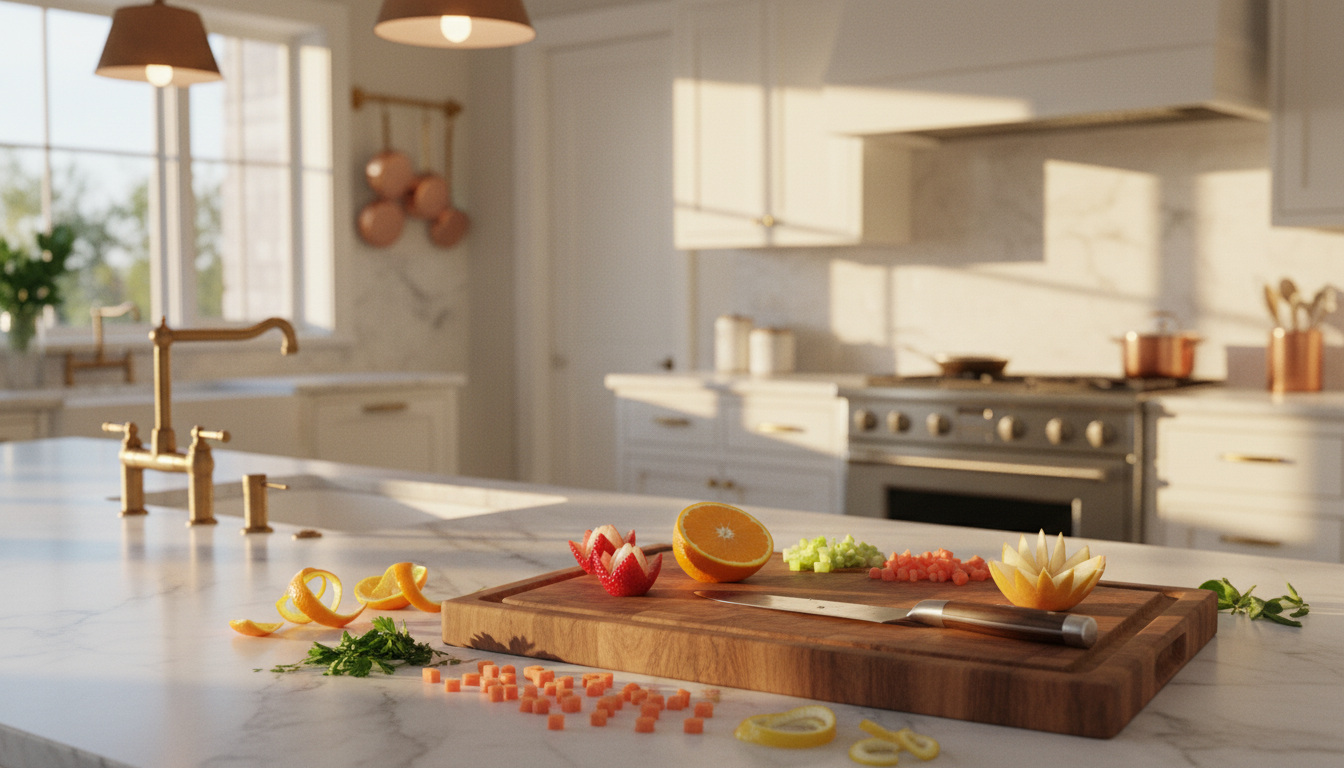
A paring knife is far more than a peeler—it’s a precision powerhouse that turns everyday ingredients into restaurant-quality dishes through ten surprising techniques you can master at home. This article shows how its short, sharp blade segments citrus without pith, sculpts seven-sided tournée vegetables that cook evenly, scores meat and dough for better flavor and rise, and even replaces toothpicks to test cake doneness with clearer results. You’ll learn pro-level grips and safety tricks—like peeling toward yourself for control—then progress from simple strawberry flowers and mushroom cross-hatches to chocolate cutouts and flawless seafood prep, all with one affordable tool. By swapping bulky knives for this nimble “artist’s brush,” you save drawer space, cut waste, and add visual flair that research proves makes food taste better, transforming routine meals into precise, efficient, and impressive creations.
Introduction
The Underestimated Kitchen Hero
Despite its modest 7-10cm blade, the paring knife performs precision tasks that larger knives simply can't handle [1]. While chef's knives often steal the spotlight, this compact tool excels in detailed work where control matters more than power.
Its sharp, pointed blade makes precise cuts on small ingredients, from garlic cloves to fresh herbs, while its lightweight design allows for the maneuverability needed for delicate tasks [2]. Beyond the obvious peeling and trimming functions, a paring knife handles specialized techniques that transform ordinary cooking into culinary artistry—segmenting citrus, deveining shrimp, creating garnishes, and executing decorative cuts that elevate presentation [1].
This kitchen workhorse combines affordability with versatility, making it essential for both novice cooks and professional chefs who understand that precision often matters more than power.
Beyond Traditional Paring Knife Uses
Paring knives transcend their reputation as mere peeling tools to become precision instruments capable of detailed culinary work. While traditionally used for basic fruit and vegetable preparation, these compact blades excel at intricate tasks that bulkier knives simply cannot handle [4]. The sharp, pointed tip allows access to tight spaces for tasks like deveining shrimp or hulling strawberries—creating cleaner results in less time [4].
Professional chefs value paring knives for creating decorative garnishes, precision scoring of meat surfaces to improve marinade penetration, and even notching dough before baking to control expansion [4]. Their size and maneuverability make them perfect for segmenting citrus, removing seeds from peppers, and crafting uniform small cuts that ensure even cooking [4]. Beyond food preparation, these versatile tools help with practical kitchen tasks like opening packaging or removing labels—functions that showcase their utility beyond conventional culinary roles [4].
Jacques Pépin ranks the paring knife among the three most essential kitchen tools, confirming its status as not just a backup blade but a fundamental instrument in skilled food preparation [4].
Why These Surprising Applications Matter in Your Kitchen
Discovering unexpected uses for your paring knife transforms it from a single-purpose tool into a kitchen essential that enhances your cooking precision and efficiency. While often relegated to secondary status behind chef's knives, understanding these surprising applications elevates the paring knife to "the artist's brush for the chef" - an instrument for detail, control, and nuance [5].
These unexpected techniques matter because they eliminate the need for multiple specialty tools, saving both kitchen space and money. The paring knife's versatility means you can achieve professional-quality results across diverse cooking tasks without switching between multiple implements.
Perhaps most importantly, mastering these surprising applications changes how you approach everyday cooking, transforming routine preparation into opportunities for craft and precision. In the hands of a skilled cook, this humble tool becomes "the most versatile and precise instrument in the kitchen," allowing you to execute detailed work that bulkier knives simply cannot manage [5].
Understanding Paring Knife Versatility
Key Design Features That Enable Multiple Uses
Two essential design features unlock the paring knife's versatility: its compact blade and straight edge. These simple characteristics transform this small tool into your precision partner in the kitchen.
The short blade gives you exceptional control for detailed work—think of it as the difference between painting with a fine brush versus a roller. The non-serrated edge slices cleanly through delicate ingredients without tearing, while the pointed tip reaches into tight spaces where larger knives simply won't fit.
These features combine to handle precision tasks with ease: peeling, trimming, coring, hulling, scoring, segmenting, mincing, and dicing [6]. When selecting your paring knife, look for quality blade material and a comfortable handle that fits naturally in your hand—like an extension of your fingertips.
How Paring Knives Compare to Other Small Kitchen Knives
Understanding the small knife family helps you choose the right tool for each task. Your standard paring knife (2 1/4" to 4 1/2") is the go-to for most precision work, while utility knives (4" to 7") bridge the gap between paring and chef's knives [7][8]. Think of it this way: reach for your paring knife when working with berries, garlic, or citrus—anything requiring delicate control.
Switch to a utility knife for medium tasks like slicing tomatoes or trimming chicken breasts [9]. For specialized work, you'll find variations like the bird's beak paring knife with its curved blade—perfect for peeling round fruits with minimal waste—and the sheep's foot style with its flat edge that stays sharp longer but trades some flexibility [7][8]. Most home cooks find a quality straight-edge paring knife handles 90% of their precision tasks.
Save the specialty shapes for when you've mastered the basics and know exactly what techniques you want to explore.
The Precision Advantage in Everyday Cooking
In everyday cooking, precision makes the difference between good and great results. Your paring knife shines in those moments when control matters most—removing pepper seeds without losing flesh, segmenting citrus cleanly without bitter pith, or creating simple garnishes that make Tuesday's dinner feel special.
This precision particularly matters for ingredients that stay visible on the plate, where clean cuts translate directly to better presentation and more even cooking. While your chef's knife handles the heavy lifting, your paring knife brings the finesse that elevates home cooking—extracting maximum flavor from small ingredients, ensuring consistent results, and adding those professional touches that make everyday meals memorable [5].
Surprising Fruit Preparation Techniques
Use #1: Creating Perfect Citrus Supremes
Creating clean citrus segments without bitter membranes transforms everyday fruit into something special. This supreming technique gives you pure citrus flesh that brightens salads, desserts, and any dish that needs a fresh pop of flavor [10]. Start by slicing off both ends of your citrus to create stable, flat surfaces.
Hold the fruit steady and use your paring knife to follow the natural curve of the fruit, removing all peel and white pith while saving as much flesh as possible [10]. The paring knife's compact size and sharp tip give you the control needed for the detailed work ahead. Cut along both sides of each membrane, meeting at the center to release clean segments [11].
Always work over a bowl—that juice is too valuable to waste [10]. This precision work requires a sharp, maneuverable blade like a quality paring knife, making quick work of what would be impossible with larger knives. Use these clean segments to add brightness to weeknight salads or elevate your weekend brunch [11].
Use #2: Crafting Intricate Fruit Garnishes and Carvings
Your paring knife opens up creative possibilities for fruit garnishes that impress without requiring years of practice. The short blade gives you control for both simple decorative cuts and more detailed work [12]. Start with easy wins: turn strawberries into flowers by making small V-shaped cuts around the sides, or create radish roses with angled cuts around the edges [14].
As your confidence grows, try scoring patterns on melon rinds or crafting apple fans with a series of thin, connected slices [13]. The knife's sharp tip makes it simple to create citrus spirals for cocktail garnishes or cut decorative crowns into lemons for serving alongside seafood [13]. While fruit carving has ancient roots in Thai royal cuisine [12], these techniques work just as well for adding visual interest to your everyday meals.
A Tuesday night fruit salad becomes special when you take an extra minute to fan out apple slices or create strawberry flowers [14]. For best results, choose firm fruits that hold their shape well, and keep your knife sharp—clean cuts make all the difference in how professional your garnishes look [12].
Techniques for Maintaining Control During Delicate Fruit Work
Good knife control makes the difference between clean garnishes and messy mistakes. Master these two grips for different tasks: the claw grip protects your fingers while guiding precise cuts, perfect for trimming and basic prep work [17]. For detailed garnish work, switch to the tip grip—hold the knife's point between your thumb and forefinger for maximum control during delicate cuts [17].
Here's what surprises many home cooks: when peeling fruits with a paring knife, you actually peel toward yourself, not away. Hold the fruit in one hand, grip the knife firmly, and use your thumb to guide the blade as you rotate the fruit [16]. This gives you better control than pushing the knife away from your body, especially with slippery fruits like peaches or kiwis [16].
For tasks like segmenting citrus or removing seeds, stabilize your cuts by wrapping three or four fingers around the handle while resting your thumb on the fruit itself [4]. This extra contact point prevents the blade from wandering during shallow cuts [15]. Most importantly, keep your blade sharp—a dull knife forces you to use more pressure, which leads to slips and uneven cuts [17].
Transforming Ordinary Fruit Presentations
Simple fruit cuts can transform your everyday cooking—and research backs this up. Studies show we actually perceive food as tasting better when it looks appealing on the plate [18]. Try these practical garnishes that take just minutes: create citrus pinwheels by making one cut halfway through a slice, then a complete cut, finishing with a simple twist from the center [19].
Turn apple wedges into fans by making several perpendicular cuts that stop just before the edge, then gently spreading them out [19]. Transform strawberries into flowers with quick V-shaped cuts around the sides—kids especially love these [19]. For brunch presentations, fan avocado slices into roses by overlapping thin pieces in a spiral pattern [19].
Remember these plating basics: arrange items in odd numbers (three strawberry flowers look better than four), leave some empty space on the plate to highlight your garnishes, and add height for visual interest [20]. White plates make colorful fruit pop, while dark plates create dramatic contrast for light-colored garnishes [20]. These simple techniques turn Tuesday night fruit salad into something special without adding time or complexity to your cooking [19].
Unexpected Vegetable Applications
Use #3: Precision Mushroom Preparation and Sculpting
Your paring knife transforms ordinary mushroom prep into precision work that actually improves how they cook and taste. That small, pointed blade reaches spots larger knives simply can't—like getting clean cuts at the base of shiitake caps where those woody stems attach [21]. Unlike bulkier knives, your paring knife gives you the control needed for detailed mushroom work.
Take portobellos: the knife's tip lets you precisely scrape away those dark gills that can make your dishes look muddy (and it works better than using a spoon) [21]. Here's where it gets interesting—use the blade to score shallow crosshatch patterns across mushroom caps. This simple technique dramatically increases surface area, helping mushrooms absorb more flavor from your sauces and marinades [23].
When you're making mushroom-forward dishes, the paring knife helps you cut uniform pieces that cook evenly: thin slices for creamy sauces, medium quarters for pasta dishes that hold their shape, or chunky pieces for stir-fries that won't fall apart [22][23]. Getting those uniform cuts means every piece cooks at the same rate—no more finding both raw and overcooked mushrooms in the same pan [22].
Use #4: Mastering the Classic Vegetable Tournée
The tournée cut turns everyday root vegetables into elegant seven-sided footballs—and it's not just about looks. This classic French technique creates uniform 2-inch pieces with tapered ends that cook evenly and brown beautifully as they roll around your pan [24]. While pros traditionally use a specialized bird's beak knife with its curved blade, you can achieve the same results with your trusty [paring knife](https://misen.
com/products/paring-knife) and some practice [25]. Here's how: hold a peeled vegetable segment in your non-dominant hand, place your knife-hand thumb at the vegetable's bottom, then carefully trim seven curved faces while rotating the piece [25]. Think of it like shaping an egg—curve each cut from end to end with steady pressure [26].
This technique works best with firm vegetables like potatoes, carrots, and parsnips (yes, you'll have some scraps, but they're perfect for stock) [25]. Sure, the tournée might feel like a throwback to classical French cooking—culinary students famously dread learning it—but there's real value here: those uniform shapes cook evenly throughout, giving you consistent texture every time [24][25].
Use #5: Creating Uniform Brunoise and Julienne Cuts
Your paring knife excels at creating those precise brunoise and julienne cuts that make dishes look and cook professionally. Julienne cuts create matchstick strips about 1/8 inch thick—these become the foundation for brunoise, those tiny 1/8-inch cubes that cook evenly and look impressive on the plate [27]. While most people reach for their chef's knife, your paring knife actually gives you better control when working with smaller vegetables. Start by squaring off your vegetable—trim the ends and create flat surfaces on all sides [28].
For julienne, slice your squared vegetable lengthwise into thin, uniform slices, then cut those slices lengthwise again into matchsticks [28]. Want brunoise? Simply line up your julienne strips and cut crosswise into perfect little cubes [27]. This precision really matters when you're working with smaller vegetables or creating garnishes—those uniform cuts aren't just about looks, they ensure everything cooks at the same rate [29].
Transform everyday carrots, onions, celery, and bell peppers into restaurant-quality components that actually cook better because they're all the same size [29]. Yes, these cuts take practice, but your paring knife's smaller size makes it easier to achieve professional results, especially with smaller quantities where a chef's knife feels too big [27].
Elevating Everyday Vegetable Dishes with Precision Cutting
As we've seen throughout this guide, precision cutting transforms everyday vegetables in ways that go beyond just appearance. How you cut your vegetables directly affects their cooking and taste—those minced aromatics melt seamlessly into sauces, while larger cuts maintain their identity in hearty stocks [31]. It's all about surface area: remember those crosshatched mushroom caps from earlier? They absorb more flavor.
Those uniform brunoise cubes? They cook at exactly the same rate [31]. Your paring knife shines when working with smaller vegetables where a chef's knife feels clumsy, giving you the control needed for both better cooking and presentation [30]. Think about it—uniformly cut vegetables don't just look professional, they actually taste better because every piece cooks evenly.
No more finding both mushy and crunchy bits in the same dish [32]. These techniques prove you don't need fancy ingredients or complicated recipes to elevate your cooking—just the precision that comes from understanding your tools.
Specialized Protein and Seafood Techniques
A paring knife’s short, razor-sharp point lets you slip between oyster shells, score squid, lift pin bones, and tease every morsel of meat from crab legs with surgical precision no larger blade can match.
Use #6: Advanced Seafood Preparation Beyond Deveining
Your paring knife handles seafood prep tasks that go way beyond basic deveining. The short, pointed blade gives you the control needed to extract meat from shellfish—you can make clean cuts around oyster adductors to release the meat intact [33]. When skinning delicate fillets, the knife's size lets you work precisely while saving every bit of flesh [33].
That sharp tip becomes essential for separating fillets from bones, especially in fish with tricky bone structures where chef's knives feel clumsy [33]. For lobster or crab, reach for your paring knife to extract meat from tight spots in legs and joints—something larger knives simply can't do [16]. When filleting whole fish, the small blade gives you better control for that crucial cut behind the gills, then helps you follow the backbone cleanly [33].
You'll also find it perfect for presentation touches—create shallow crisscross patterns on fish skin that help marinades penetrate while making your dishes look restaurant-worthy [34]. What makes the paring knife special is its versatility: use it for scoring squid for calamari, preventing fish skin from curling during cooking, or removing pin bones without tearing the flesh [33].
Use #7: Precision Meat Scoring and Trimming
A paring knife gives you the precise control needed for meat prep that larger knives simply can't manage. Start by chilling your meat for easier handling, then use the knife's pointed tip to slip under silver skin. Angle the blade slightly upward to cleanly separate unwanted tissue without losing good meat [35]. Take your time with small sections, especially on tenderloin or chicken thighs, where careful work saves every bit of usable meat [35].
Strategic scoring is where your paring knife really shines. Create shallow cuts in fat caps to help them render and crisp up during cooking [16]. These cuts do double duty—they tenderize the meat while creating more surface area for marinades to work their magic [16]. On pork belly, score the skin in a crosshatch pattern for even fat rendering [35].
The knife's small size also makes it ideal for trimming excess fat from tenderloins and chops, ensuring even cooking throughout [35]. Here's a pro tip: cut small pockets in roasts to tuck in garlic cloves or herb sprigs that flavor the meat from inside out [35]. These simple techniques turn everyday cuts into something special, maximizing both flavor and texture.
Creating Professional-Quality Protein Presentations
Your
Safety Tips for Delicate Protein Work
Safe protein prep starts with proper knife control. As discussed in our grip techniques section, hold your paring knife with fingers wrapped around the handle and your thumb on the protein for stability—this gives you the control needed for detail work like deveining shrimp or removing pin bones [38]. Always chill proteins first to make them firmer and less slippery [39].
For seafood, pat everything dry and place a damp towel under your cutting board to prevent sliding [39]. When making delicate cuts, use a 'draw cut' rather than chopping—gently pull the knife toward you with light pressure to avoid tearing [39]. Keep food safety in mind: use separate cutting boards for different proteins and wash your knife with warm, soapy water between tasks [16].
Work with the grain when deveining shrimp or butterflying meat, using just the knife's tip for shallow cuts that keep the protein intact [39]. Most importantly, keep your non-cutting hand well clear of the blade path, using just your fingertips to steady the meat while scoring [16].
Surprising Baking and Dessert Applications
Use #8: Precision Pastry and Dough Work
The paring knife's precision transforms it into an essential tool for detailed pastry and dough work that larger knives can't handle. Its small, sharp blade excels at scoring bread dough—creating those shallow cuts that control how dough expands during baking while forming decorative patterns on the finished loaf. Unlike serrated knives that can tear delicate dough, the paring knife makes clean cuts without dragging, preserving the dough's structure and gases trapped inside [16].
When scoring bread, use light, decisive cuts at a 45-degree angle after the final proofing, allowing for controlled expansion that creates both functional vents for steam and artistic designs [40]. This technique works equally well for pie crusts, where precise cuts allow steam and juices to escape during baking without compromising the integrity of the surrounding crust [16]. For decorative leaf scoring and other intricate patterns, the knife's maneuverability allows bakers to create professional-looking designs that enhance both function and presentation [16].
The proper technique involves confident, shallow strokes—applying just enough pressure to cut through the dough's surface without deflating it or disturbing the structure beneath [41]. This precision control makes the paring knife superior to kitchen scissors or specialized bread lames for home bakers who want versatility without investing in single-purpose tools.
Use #9: Artisanal Chocolate and Confectionery Techniques
The paring knife transforms ordinary chocolate work into artisanal confectionery through precision cuts impossible with larger tools. When creating contemporary chocolate decorations, the paring knife excels at cutting tempered chocolate spread on a frozen marble slab—a technique producing organic, almost crude decorative elements that contrast beautifully with sleek dessert surfaces [42]. After piping tempered chocolate onto the cold marble and spreading it with a pastry comb, the paring knife's small blade provides the control needed to cut precise strips that can be lifted and shaped while still malleable [42].
This technique gives you approximately 30 seconds to manipulate the chocolate before it hardens completely, creating unique decorative elements perfect for modern entremet and plated desserts [42]. For 3D chocolate work, the paring knife serves as an essential finishing tool for removing flash—excess chocolate that forms along seam lines when using moulded chocolates [43]. After unmolding solid or hollow chocolate pieces, use the knife's sharp edge to precisely cut away these imperfections, followed by compressed air or a brush to remove excess fragments [43].
The paring knife's maneuverability allows for delicate corrections without damaging the tempered chocolate's shine or structure [43]. Beyond decoration, the paring knife creates foundational elements for confectionery work—cutting chocolate squares for bonbons, fashioning curls for garnishing, and detailing intricate pieces like chocolate tiaras [44]. This versatility makes the paring knife indispensable for both professional pastry chefs and home confectioners seeking to elevate their chocolate work beyond basic techniques.
Testing Cake Doneness: The Paring Knife Alternative
Your paring knife offers a superior alternative to traditional toothpicks for testing cake doneness. While toothpicks and cake testers are standard tools, they have significant limitations—toothpicks are small, non-reusable, and too short for tall bundt or loaf cakes [45]. Metal cake testers don't reveal enough information and are too slim to provide meaningful results [45]. A paring knife solves these problems with its thin blade and increased surface area, which more clearly reveals underbaked crumbs, especially in thick batters like pound cake or banana bread [47].
To test doneness, insert the knife into the center of your cake—if it comes out clean, the cake is finished; if batter or crumbs cling to the blade, continue baking [46]. The knife's wider surface area becomes your advantage, providing clearer evidence about what's happening inside your cake than a toothpick's limited view [45]. Professional bakers particularly value this method because it eliminates the guesswork of analyzing what's on a toothpick ("is that raw batter or melted chocolate chip? moist crumb too moist or just right?
") [45]. Despite concerns about cutting into the cake, the incision is razor-thin—often less noticeable than toothpick holes—and the additional information you gain makes this slight mark worthwhile [45]. For chocolate cakes where visual cues like golden-brown coloring aren't available, the paring knife test becomes even more valuable as part of your doneness assessment toolkit [47].
Creating Show-Stopping Dessert Presentations
The paring knife transforms ordinary desserts into visual masterpieces through precision techniques impossible with larger tools. For citrus decorations, use the knife's pointed tip to create perfect supremes or craft elegant loops to garnish cake edges—cut thin slices of orange or lemon, then carefully cut between peel and fruit about three-fourths around the inside edge before curling the free end under to create a decorative loop [48]. Transform strawberries into elegant tulips by making small diagonal V-shaped cuts around the circumference, creating two layers of "petals" that elevate simple fruit into artistic garnishes [48].
For chocolate work, the paring knife creates clean cuts through tempered chocolate spread into thin sheets—cut precise shapes freehand or use cookie cutters as guides for professional-looking decorations without specialized tools [48]. Create sugared fruit garnishes by making strategic cuts in berries or citrus before brushing with egg white and coating with granulated sugar, producing crystallized elements that add sparkle to cakes and pastries [48]. The knife's control allows for delicate citrus twists—slice off peel in continuous strips, then tightly coil them into spirals or pinwheels that add instant visual appeal to plated desserts [48].
When working with chocolate decorations, use the paring knife to melt chocolate into small pieces before tempering, then pipe designs onto waxed paper that can be peeled off once set—creating flowers, hearts, or lattice patterns that transform ordinary desserts into special-occasion centerpieces [48]. For the ultimate presentation enhancement, combine techniques by arranging sugared flowers, chocolate cutouts and citrus elements together on a single dessert plate, considering basic composition principles: use odd numbers of items, create height for drama, and choose plate colors that contrast with your garnishes [48].
Creative Kitchen Solutions
Use #10: Food Styling and Professional Plating Techniques
Your paring knife becomes a precision plating tool that transforms everyday meals into restaurant-worthy presentations. Visual appeal directly impacts how we perceive taste—research shows what we see affects flavor perception before we take the first bite [49]. The paring knife's small, pointed blade gives you unmatched control for creating delicate garnishes: chiffonade herbs, paper-thin vegetable slices, and precise herb sprigs that add both color and flavor [50].
Building on the fruit and vegetable techniques covered earlier, you can create height and depth through ultra-thin, uniform slices—a fundamental plating technique where vertical elements immediately draw the eye [50]. The knife helps manage negative space by precisely trimming components, ensuring each element has room to shine without cluttering the plate [50]. When working with sauces, use the knife tip to create shallow wells in purees or clean edges in sauce patterns.
Think of your plate as a canvas where sauces connect different elements through strategic dots or swooshes [51]. Start by sketching your plating ideas or creating practice plates, then focus on highlighting your key ingredient while maintaining color balance—green elements particularly pop and create visual interest [51]. Work with the Japanese-inspired principle of incorporating five colors: red, white, green, black, and yellow for naturally balanced presentations [49].
Emergency Substitution: When Your Paring Knife Replaces Specialty Tools
A paring knife serves as an emergency replacement for numerous specialty tools, saving both kitchen space and money while delivering professional results. While professional chefs accumulate drawers full of specialized equipment, many home cooks can achieve similar results with a quality paring knife [52]. Skip the single-use gadgets cluttering kitchen drawers—your paring knife handles these specialized tasks just as well [52]. Need to zest citrus? The knife's sharp tip scores the peel perfectly without hitting bitter pith.
Deseeding peppers or tomatoes? The precise blade removes seeds more efficiently than many dedicated tools. Testing cake doneness? As we covered in the baking section, your paring knife provides better feedback than toothpicks. The flat blade side even smooths fondant or spreads soft butter [52].
When selecting a paring knife as your multi-purpose tool, prioritize quality—as Chef Jean Pierre notes, "When it comes to buying equipment, I believe in only buying quality items. Many of these items may cost more, but they end up serving you better, and can last a lifetime" [52]. A well-crafted paring knife can provide decades of service while replacing numerous single-purpose tools.
Adapting Restaurant Techniques for Home Cooking
Restaurant chefs reach for paring knives when precision matters more than speed—techniques you can easily bring to your home kitchen. While professional kitchens stock specialized tools for every task, your paring knife serves as an all-in-one precision instrument. Know when to use it: reach for your paring knife for small, delicate work like mincing shallots, creating herb garnishes, or any task requiring fingertip control [16].
For tougher vegetables that need more force, switch to a larger knife. The segmenting techniques we explored earlier transfer directly from restaurant kitchens—whether you're supreming citrus or creating decorative vegetable cuts [16]. What really distinguishes professional work is attention to detail: the precise scoring patterns on bread, the strategic shallow cuts on proteins that enhance both cooking and presentation [16].
As discussed in our fruit and vegetable sections, the unique paring grip—peeling toward yourself with your thumb as a guide—gives you the control that transforms simple ingredients into impressive garnishes [16].
Maintenance Tips for Preserving Precision
Keep your paring knife performing at its best with proper care. Always hand wash with warm, soapy water and dry immediately—dishwashers can damage the delicate blade through harsh detergents and jostling [16].
Store your knife properly using blocks, magnetic strips, or blade guards to prevent edge damage from drawer contact [54]. Regular maintenance makes all the difference: hone your blade frequently to straighten the microscopic edge that bends during use, extending sharpness up to 10 times longer [53].
When the knife feels dull despite honing, it's time to sharpen—frequency depends on use, from monthly for heavy users to annually for occasional cooks [53]. For professional sharpening results, consider using whetstones or sending your knife to a professional sharpening service that specializes in quality cutlery [53].
Conclusion
Maximizing Your Paring Knife's Potential
Maximizing your paring knife's potential starts with recognizing it as a precision instrument rather than just another blade. To unlock the techniques covered in this guide, focus on proper grip control—the pinch grip gives you maximum precision for delicate garnish work, while the claw grip protects your fingers during detailed cutting (as detailed in the fruit preparation section). Remember that paring knife technique breaks the usual safety rules: you'll often peel toward your body using your thumb as a guide, especially for the citrus supreming and decorative cuts we've explored [16].
Start practicing with simple tasks like hulling strawberries or scoring mushrooms before attempting the advanced tournée cuts or chocolate work. When you notice yourself forcing the blade—particularly with root vegetables or hard squashes—that's your signal to switch to a larger knife [16]. Keep your paring knife performing at its best with simple maintenance: hand wash immediately after use, hone regularly, and consider professional sharpening services to maintain that essential razor edge.
Transform your everyday cooking by treating this compact tool with the respect it deserves.
Incorporating These Surprising Uses Into Your Cooking Routine
Incorporating these surprising paring knife techniques into your daily cooking starts with small, practical changes. Begin with the basics from our 10 uses: supreme citrus for salads, create mushroom garnishes, score meat for better marinade absorption, or test cake doneness without a toothpick [56]. Look for integration points in recipes you already make—that morning grapefruit becomes an opportunity to practice supreming, tonight's roast gets precision scoring for enhanced flavor, and weekend baking includes decorative pastry cuts.
The unique paring knife grip takes practice: unlike standard cutting where you work away from your body, many precision tasks require peeling toward yourself with controlled thumb guidance [16]. Build skills progressively, starting with the fruit techniques before attempting vegetable tournée cuts or chocolate work. Pay attention to resistance—when you're forcing the blade through hard vegetables or thick stems, switch to a utility or chef's knife [16].
Each meal offers chances to practice these professional techniques, gradually transforming routine prep work into opportunities for culinary artistry.
Investing in Quality: What to Look for in Your Next Paring Knife
Selecting a quality paring knife means looking beyond price to find features that support the precision techniques you've learned. Start with blade material—high-carbon stainless steel offers the best combination of edge retention and easy maintenance for the detailed cuts we've covered [6]. Handle comfort matters more than you might think; during intricate garnish work or extended prep sessions, the right grip prevents hand fatigue and maintains control [6].
Look for seamless construction where blade meets handle, balanced weight distribution, and that essential 2-4 inch blade length that makes these techniques possible [6]. Test how the knife feels in your hand before buying—it should feel like a natural extension of your movements, especially important for the unique paring knife grips you'll use. Whether you're investing in your first quality paring knife or upgrading from a basic model, choose versatility over specialized features.
The right paring knife transforms the 10 surprising uses from this guide into everyday cooking upgrades, making it one of the smartest investments in your kitchen arsenal.
- Paring knife excels at precision tasks like supreming citrus and deveining shrimp.
- Use 45-degree shallow cuts when scoring bread dough to control expansion and create patterns.
- Chill proteins before detailed knife work to improve control and prevent slipping.
- Test cake doneness with a paring knife; its wider blade shows underbaked crumbs better than a toothpick.
- Peel fruit toward your body using thumb as a guide for maximum control and minimal waste.
- Uniform vegetable cuts ensure even cooking and professional presentation in everyday dishes.
- Hand wash and hone your paring knife regularly to maintain its essential razor edge.
- https://kumaknives.com/blogs/blog/10-reasons-why-a-paring-knife-is-a-must-have-in-your-kitchen-the-ultimate-guide?srsltid=AfmBOopa6QwkoP4joNRnfykONrLR07JXcZm2lZwVAx2yRsThWzwTAIUr
- https://sharpedgeshop.com/blogs/knife-types/what-is-a-paring-knife-used-for?srsltid=AfmBOooHwlbC_YvoorLJTmRxGQ3O0IIz085evVn4Qzer5dKaP6_g2tSC
- https://yokashi.com/blogs/news/understanding-the-uses-of-a-paring-knife
- https://www.iccadubai.ae/stockpot/what-is-a-paring-knife-used-for
- https://nogentknives.com/mastering-the-paring-knife/
- https://nogentknives.com/what-is-a-paring-knife-used-for/
- https://www.webstaurantstore.com/guide/538/types-of-knives.html?srsltid=AfmBOooQ2g4f8D9O7XxfZmQsHq72JXSTvMiVNQVuEdgQ54Roc064o5U4
- https://circulon.uk.com/blogs/the-culinary-circle/what-are-the-different-types-of-kitchen-knives
- https://www.opinel-usa.com/blogs/news/how-to-choose-the-right-knife-for-every-kitchen-task
- https://bluejeanchef.com/cooking-school/how-to-supreme-citrus-fruit/
- https://www.marthastewart.com/1512359/supreming-citrus
- https://cropcirclefarms.com/fruit-carving.html
- https://chefdepot.net/channelknife.htm
- https://agarolifestyle.com/blogs/kitchen-appliances/fruit-carving-knife-set
- https://misen.com/blogs/news/the-essential-guide-to-paring-knives-precision-in-your-kitchen?srsltid=AfmBOorwVuMKzeabLYY4S3JzNAyK_awkljU_g6NPufmnzRJ_CDUtd1xp
- https://www.escoffier.edu/blog/recipes/paring-knife-101/
- https://chefsupplyco.com.au/blogs/news/mastering-paring-knives-a-chefs-guide-to-precision-cutting?srsltid=AfmBOorXbt5gYwxbU3qNLT6tTNUOuotnAKqAZrq-ncJdGBZlOaaFUD5i
- https://www.loveandcraftkitchen.com/6-easy-garnishing-ideas/
- https://www.simplyrecipes.com/how_to_prep_mushrooms_for_cooking/
- https://www.masterclass.com/articles/how-to-cut-mushrooms
- https://europeanmushrooms.eu/en/knife-techniques-mushrooms/
- https://www.seriouseats.com/the-tourne-knife-a-paring-knife-that-turns-heads-and-why-you-need-it
- https://www.escoffieronline.com/how-to-tournee-cut/
- https://thechefscult.com/the-ultimate-kitchen-knife-guide-paring-vs-tourne-knife/
- https://kyokuknives.com/blogs/kyoku-chef-blog/how-to-do-a-brunoise-cut-in-7-steps?srsltid=AfmBOoqs8SW95N_opdIe2UW6pWCosNci3ikaOtCsnEbtn-BVD79gNpmE
- https://culinaryagents.com/resources/kitchen-basics-knife-skills
- https://whatsfordinner.com/kitchen-tips/culinary-cutting-terms-images/
- https://misen.com/blogs/news/the-essential-guide-to-paring-knives-precision-in-your-kitchen?srsltid=AfmBOoqlj48OcvD_oN-Z_CmkcrlwxdpM3bL-55WEFDaCftr4P73myPj9
- https://www.epicurious.com/expert-advice/visual-guide-to-useful-knife-cuts
- https://everyday-uniforms.com/blogs/chefs-magazine/knife-skill-guide?srsltid=AfmBOopJKBph3IaZDPv9Uljs6HcFlFYeG1CxhGyv4EHwH1jZxQRsk41A
- https://eliteprocutlery.com/knife-techniques-for-preparing-fish-and-seafood/?srsltid=AfmBOopRzKCVHRLRQabEjM0-rNQPcJsGutVAfQPt4kcrjtOS0sGt0947
- https://misen.com/blogs/news/the-essential-guide-to-paring-knives-precision-in-your-kitchen?srsltid=AfmBOoobidmF0O-2CEo7125p7bYEU7_cf9BqfalfZ_nM5JGQKHgNuRXK
- https://solblade.com/blogs/recipes/5-uses-for-a-paring-knife?srsltid=AfmBOorcZQzPMc-rIOFY0TCkYDXl21svJftc714ZlihlgLk6Jo0ER6Mr
- https://www.tastingtable.com/890123/are-you-actually-using-a-paring-knife-the-right-way/
- https://www.chefapprovedtools.com/blog/paring-knife-vs-chefs-knife
- https://misen.com/blogs/news/the-essential-guide-to-paring-knives-precision-in-your-kitchen?srsltid=AfmBOoq9OiJjSJ0nK4KjD16OaZloXG_V-7iYgxiRSGxPLLIVwWljZFdG
- https://technogog.com/information/the-best-knife-techniques-for-preparing-delicate-proteins/
- https://misen.com/blogs/news/the-essential-guide-to-paring-knives-precision-in-your-kitchen?srsltid=AfmBOopxoMVMtB-d3FxGTmpRCAkTzj8GAbSSFtWW_RgFtoBWRHxuNVdZ
- https://kyokuknives.com/blogs/kyoku-chef-blog/15-essential-paring-knife-uses-every-home-chef-should-know?srsltid=AfmBOorYbiPilnK_CZzfxdSBkySMSXVi25IYjChGmg5FQxrzk14HTJg7
- https://chefeddy.com/2010/05/chocolate-decor/
- https://www.retailconfectioners.org/blogpost/1854183/352995/Master-3-D-Moulded-Chocolates-with-this-Expert-Advice
- https://sugargeekshow.com/news/basic-chocolate-decorations-with-chef-christophe-rull/
- https://food52.com/story/22383-the-only-tool-i-use-to-test-cakes-is-not-a-toothpick
- https://www.bhg.com/recipes/how-to/bake/toothpick-test-alternatives/
- https://www.kingarthurbaking.com/blog/2019/07/01/how-to-tell-when-cake-is-done
- https://recipes.howstuffworks.com/tools-and-techniques/how-to-garnish-cooking.htm
- https://chefjeanpierre.com/kitchen-tips-tricks-and-techniques/must-have-kitchen-tools/
- https://sharpedgeshop.com/blogs/knives-101/guide-maintenance-of-kitchen-knives?srsltid=AfmBOoqneySuTcFwmm2ns91Mn5OD7I8pQKkPuVsmuLFwWvpZgy9cF7is
- https://www.koiknives.com/blogs/western-knife-guide/the-paring-knife-a-comprehensive-guide?srsltid=AfmBOoogcvDViWXFZboMKsZi02m9Z9Ui2UZEFdgex40X8bfCHP_xa0_k
- https://www.saafiknife.com/how-to-use-a-paring-knife-like-a-pro-chef.html
- https://www.thekitchn.com/5-more-ways-to-use-a-paring-knife-234679
